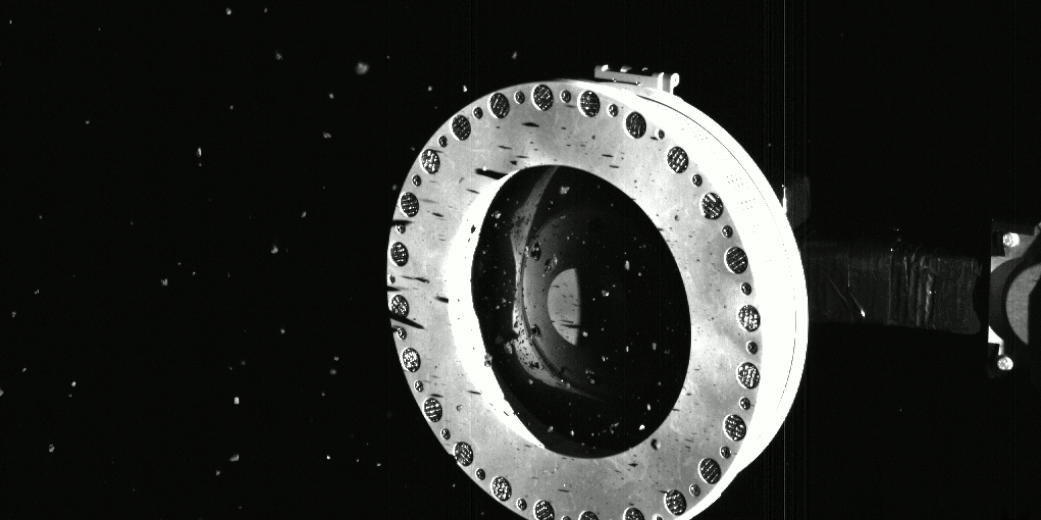
For SpaceUpClose.com & RocketSTEM
CAPE CANAVERAL, FL – NASA’s daring OSIRIS-REx spacecraft collected a huge stash of asteroidal samples from asteroid Bennu, NASA and the team confirmed based om images taken on Oct. 22 two days after touching the tiny body for six seconds on Oct. 20 with its pogo stick like TAGSAM robotic arm exactly as planned with incredible precision.
OSIRIS-REx is NASA’s first ever mission aimed at gathering samples of asteroidal dust and pebbles from the surface of an asteroid with the goal of delivery back to Earth in 2023 in a sample return canister for high powered scientific analysis by the most advanced research instruments available.
NASA’s first asteroid sample retrieval mission and takes place on a carbon rich Near Earth Asteroid collecting pristine soil and rock samples dating back to the origin of the solar system 4.5 Billion years ago and perhaps gives clues to the origin of life on Earth as well.
After a four year journey of over 200 million miles (321 million km) from Earth and two years in orbit the $1 Billion OSIRIS-REx mission touched and sampled Asteroid Bennu for six seconds.
In fact it was so obvious based on the images that the sampling head called the Touch-And-Go Sample Acquisition Mechanism (TAGSAM) head had actually collected so much dust and pebbles far in excess of the main mission requirement of acquiring at least 2 ounces (60 grams) of the asteroid’s surface material – almost too much – because particles were escaping and streaming away!
“We had a successful sample collection attempt, almost too successful,” said Dante Lauretta, the mission’s principal investigator from the University of Arizona, at a media briefing . “Material is escaping, and we’re expediting stow as a result of that.”
Therefore the team preemptively decided to stow the TAGSAM sampling head as quickly as possible to prevent further loss of precious material and cancelled plans measure the amount of asteroid regolith collected by the Sample Mass Measurement event.
“Yesterday, the OSIRIS-REx team received images of the spacecraft’s sample collector head brimming with regolith. So much sample was collected that some of it is actually slowly escaping the sampling head,” NASA tweeted.
“The mission has canceled tomorrow’s Sample Mass Measurement to protect the sample and is now on course to stow the sample as soon as possible. The spacecraft remains in good health and the mission is confident that the spacecraft has collected more than 60 grams of material.”
The mission has canceled tomorrow’s Sample Mass Measurement to protect the sample and is now on course to stow the sample as soon as possible. The spacecraft remains in good health and the mission is confident that the spacecraft has collected more than 60 grams of material. pic.twitter.com/hABL4n3JYN
— NASA's OSIRIS-REx (@OSIRISREx) October 23, 2020
The spacecraft was programmed to capture images of the sample collector head as it moved through several different positions.
“In reviewing these images, the OSIRIS-REx team noticed both that the head appeared to be full of asteroid particles, and that some of these particles appeared to be escaping slowly from the sample collector, called the Touch-And-Go Sample Acquisition Mechanism (TAGSAM) head.”
“They suspect bits of material are passing through small gaps where a mylar flap – the collector’s “lid” – is slightly wedged open by larger rocks.”
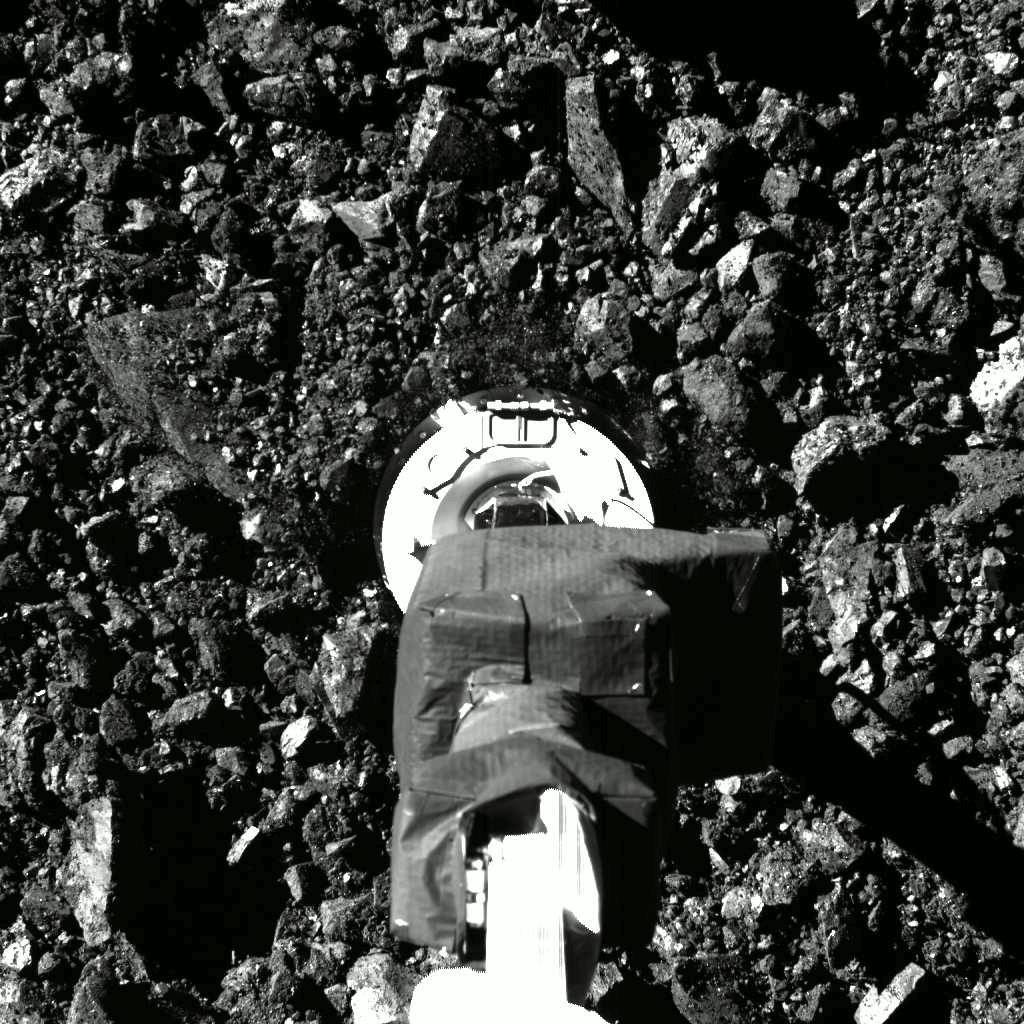
The TAG sampling event on Oct 20 brought the spacecraft all the way down to sample site Nightingale, touching down within three feet (one meter) of the targeted location – on a tiny celestial body only 510 meters wide and only slightly taller than the Empire State Building in NYC.
It rapidly fired the nitrogen gas canister into the surface to disturb soil, rocks and dust upwards for collection by the TAGSAM robotic arm device while in contact with the surface of Bennu for six seconds.
It then fired thrusters to complete the back away burn to ensure the spacecrafts safe departure.
Imagery then showed that some of these particles are slowly escaping the sampler head by “passing through small gaps where the head’s mylar flap is slightly wedged open. The mylar flap is designed to keep the collected material locked inside, and these unsealed areas appear to be caused by larger rocks that didn’t fully pass through the flap.”
Here’s a summary of the epic images from the TAG event:
Check out all the epic videos from yesterday’s journey #ToBennuAndBack here: https://t.co/p9ixwbmv4P pic.twitter.com/7YnVd1PgGE
— NASA's OSIRIS-REx (@OSIRISREx) October 21, 2020
“Bennu continues to surprise us with great science and also throwing a few curveballs,” said Thomas Zurbuchen, NASA’s associate administrator for science at the agency’s headquarters in Washington.
“And although we may have to move more quickly to stow the sample, it’s not a bad problem to have. We are so excited to see what appears to be an abundant sample that will inspire science for decades beyond this historic moment.”
After looking at the new images the team decided that any further movement of the head would cause a further loss of remaining material – such as would happen certainly happen during the Sample Mass Measurement activity originally scheduled for Saturday, Oct. 24.
Thus they cancelled the measurement activity and a braking burn scheduled for Friday to minimize any acceleration to the spacecraft and preserve the most asteroidal material .
Therefore the team focus is shifting to stowing the TAGSAM head sample inside the Sample Return Capsule (SRC), where any loose material will be kept safe during the spacecraft’s journey back to Earth.
Earth return is currently scheduled to begin in March 2021.
“We are working to keep up with our own success here, and my job is to safely return as large a sample of Bennu as possible,” said Dante Lauretta.
“The loss of mass is of concern to me, so I’m strongly encouraging the team to stow this precious sample as quickly as possible.”
The imagery and analytical data suggest that the TAGSAM collector head was flush with Bennu’s surface when it made contact and when the nitrogen gas bottle was fired to stir surface material.
It is believed that the head penetrated several centimeters into the asteroid’s surface material while collecting the massive amount of regolith.
The team also released an image showing the preliminary conclusion on its touchdown/sampling site inside Nightingale
“Preliminary telemetry shows this is where I touched down on site Nightingale – within 3 feet (1 meter) of the targeted location. Not too bad for being 200 million miles away,” the spacecraft/team tweeted with this image:
Preliminary telemetry shows this is where I touched down on site Nightingale – within 3 feet (1 meter) of the targeted location 🎯
Not too bad for being 200 million miles away 😎 pic.twitter.com/IHr621kmc6
— NASA's OSIRIS-REx (@OSIRISREx) October 21, 2020
OSIRIS-REx arrived in orbit 2 years ago for detailed science imaging, spectroscopy, analysis and site selection at the asteroid located more than 200 million miles (321 million kilometers) from Earth.
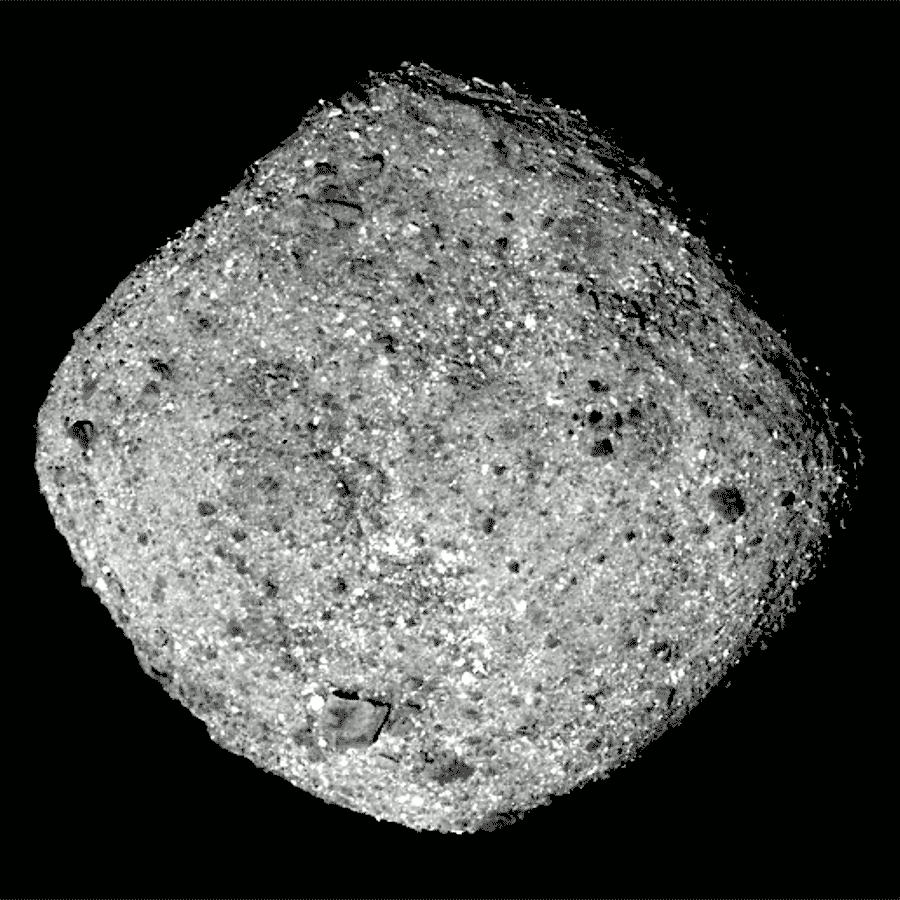
Overall the OSIRIS-REx mission involves an unprecedented 7 year science journey to Bennu and back to collect at least 60 grams of asteroidal material.
Bennu has an active surface and is and ejecting material
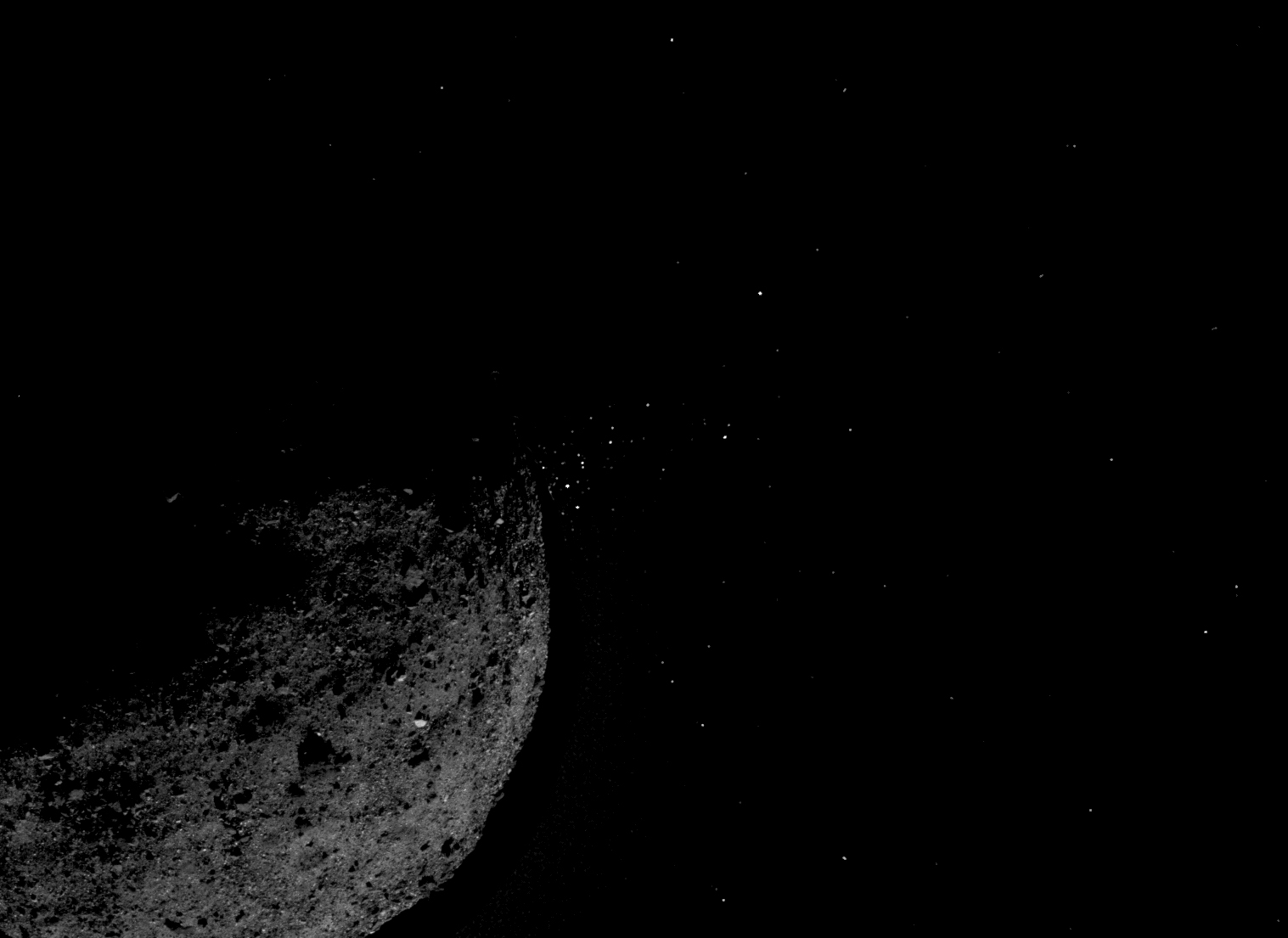
The spacecraft has extensively surveyed the asteroid before the mission team selected two possible sample sites. Close examination of these sites allow the team to pick one for sample collection. After sample collection, the spacecraft will head back toward Earth before ejecting the Sample Return Capsule for landing in the Utah desert in Sept. 2023.
OSIRIS-Rex was launched on Sept. 8, 2016 on a United Launch Alliance Atlas V rocket from Cape Canaveral Air Force Station, FL.
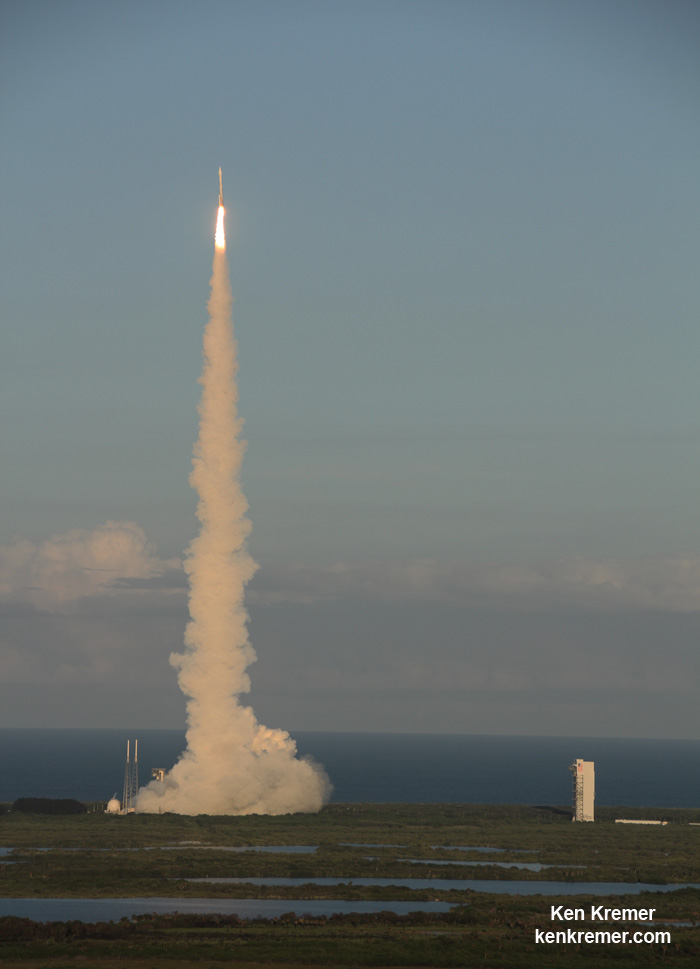
OSIRIS-Rex counts as NASA’s first mission to visit a near-Earth asteroid, survey the surface, collect a sample and deliver it safely back to Earth.
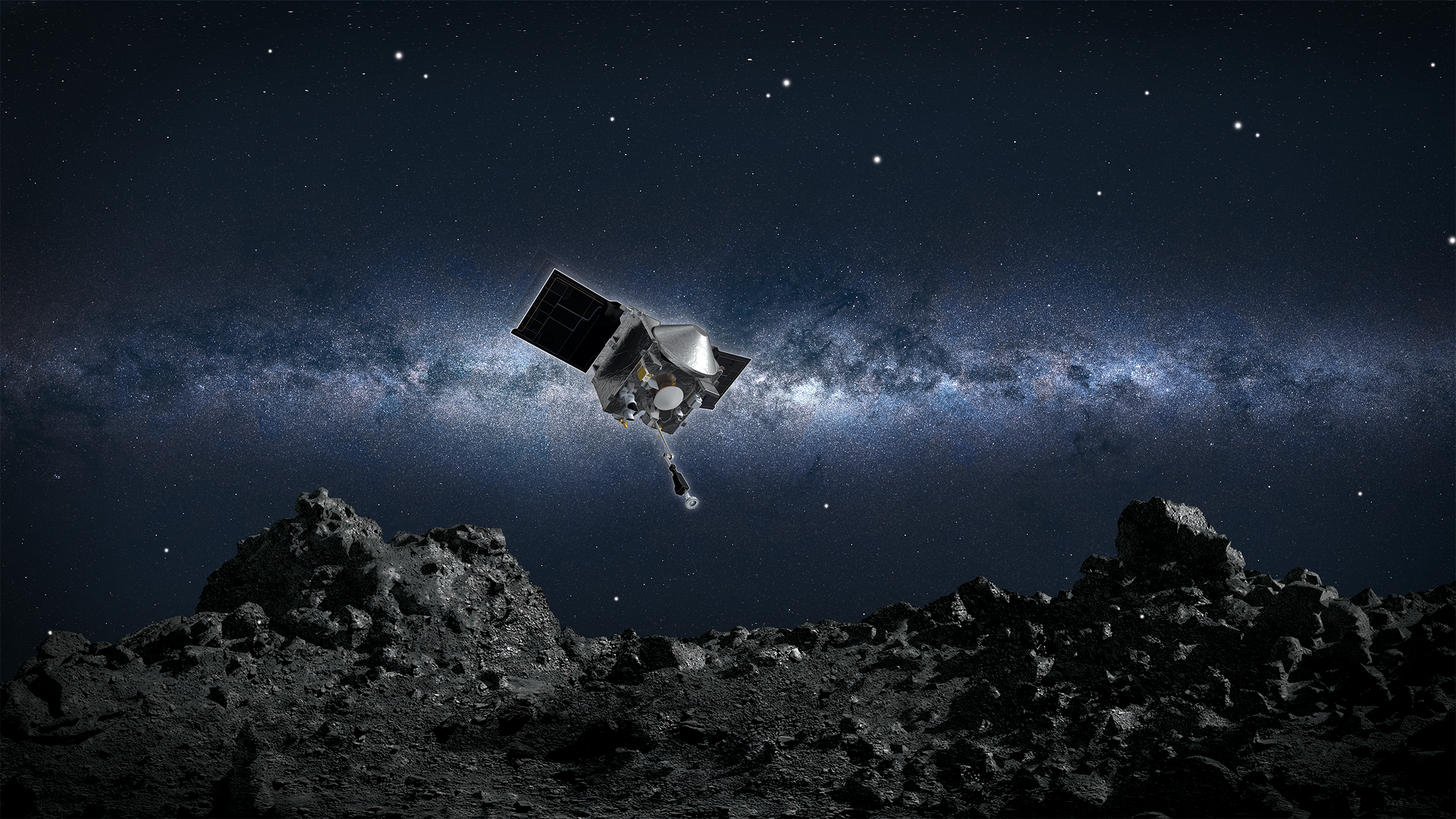
Watch my commentary at WFTV Ch 9 ABC News Orlando on NASA’s successful OSIRIS-Rex mission landing and sampling at asteroid Bennu featured on Oct 22/23:
Watch Ken’s continuing reports about OSIRIS-REx, Commercial Crew and Artemis and onsite for live reporting of upcoming and recent SpaceX and ULA launches including Demo-2, Starlink, X-37B, Solar Orbiter, Mars 2020 and more at the Kennedy Space Center and Cape Canaveral Space Force Station.
Stay tuned here for Ken’s continuing Earth and Planetary science and human spaceflight news: www.kenkremer.com –www.spaceupclose.com – twitter @ken_kremer – email: ken at kenkremer.com
Dr. Kremer is a research scientist and journalist based in the KSC area, active in outreach and interviewed regularly on TV and radio about space topics.
………….
Ken’s photos are for sale and he is available for lectures and outreach events
Please consider supporting Ken’s work by donating at Patreon:
https://www.patreon.com/kenkremer
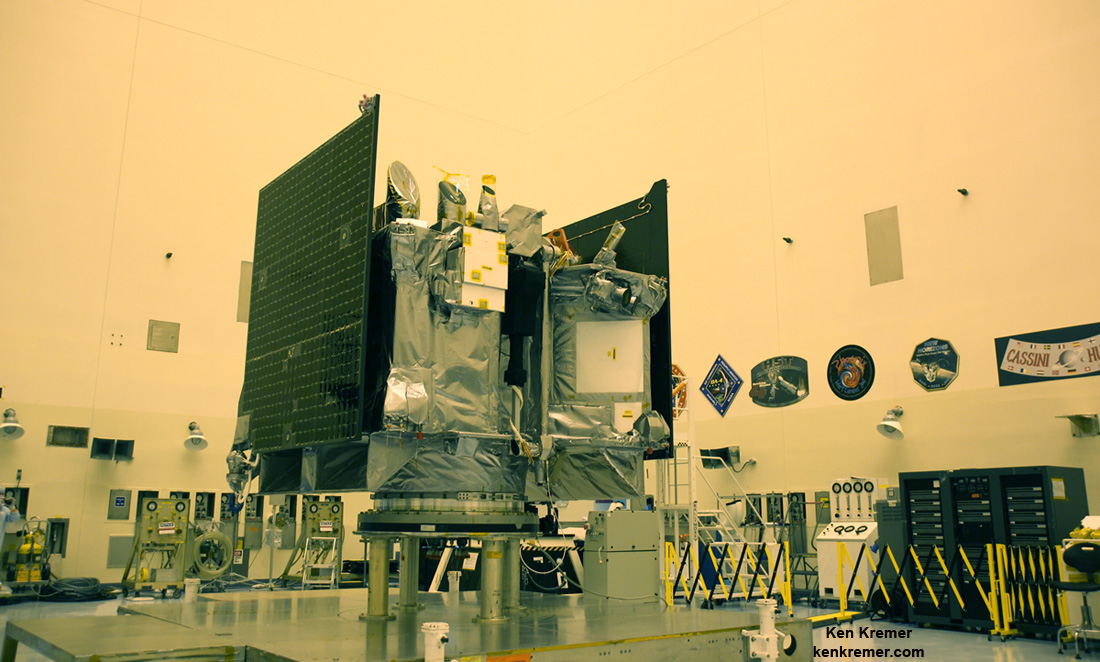
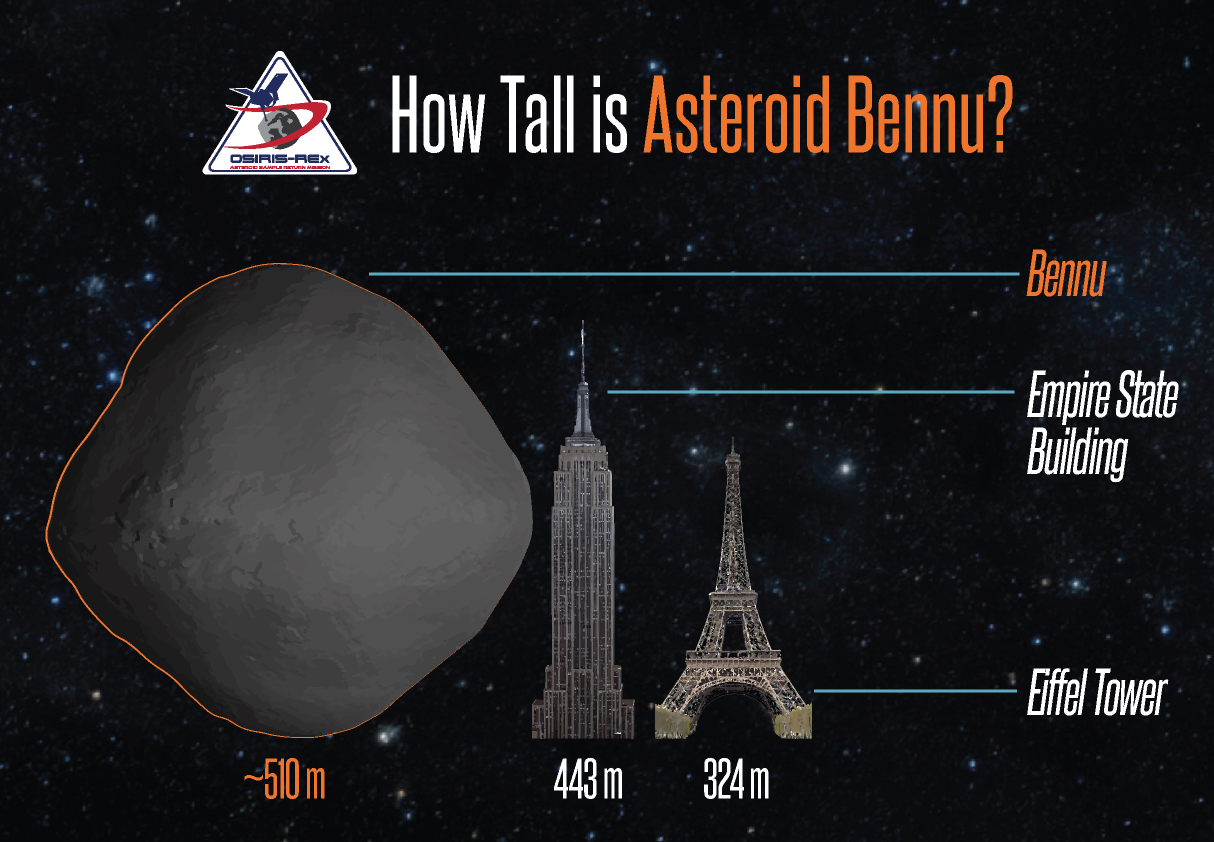
x



